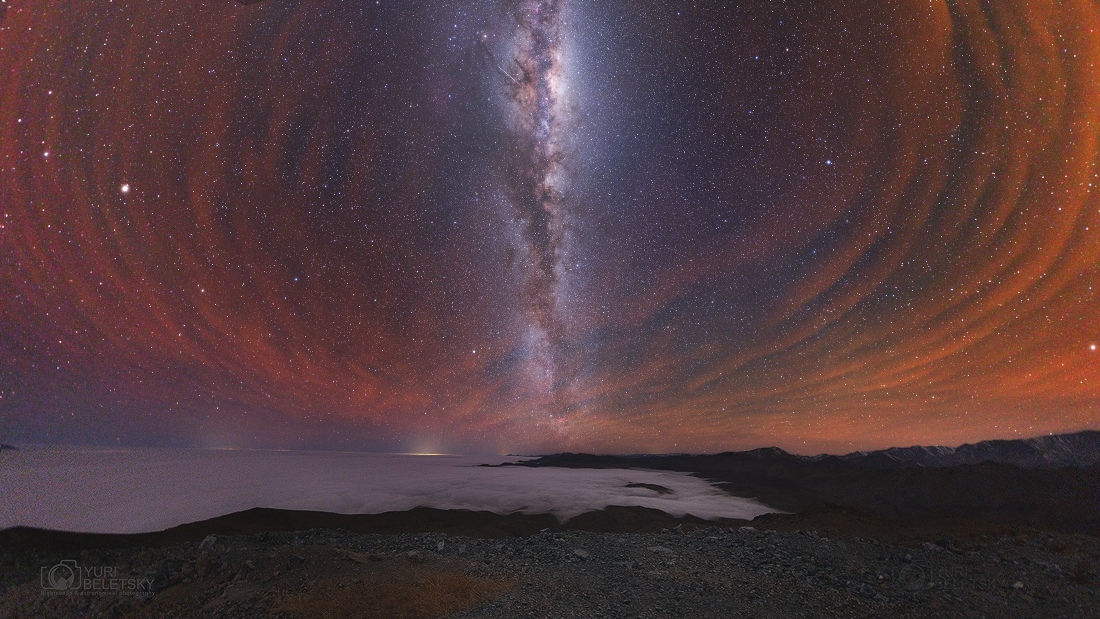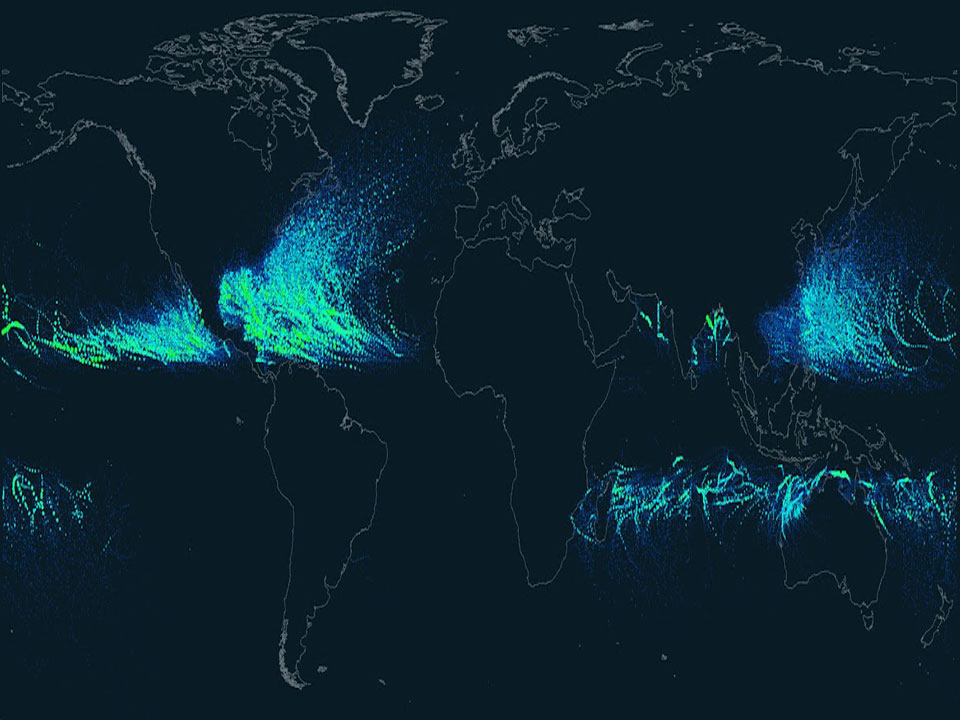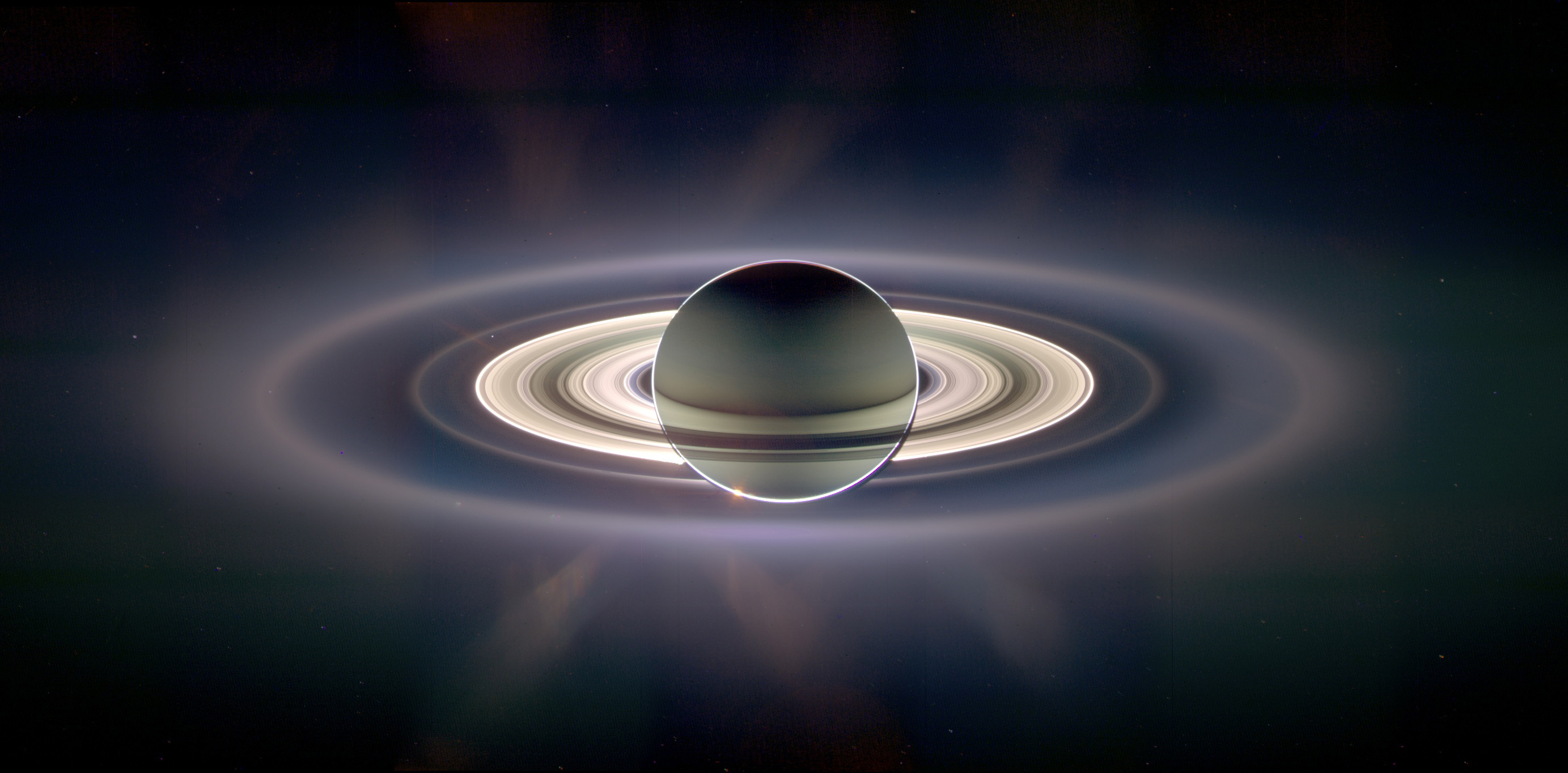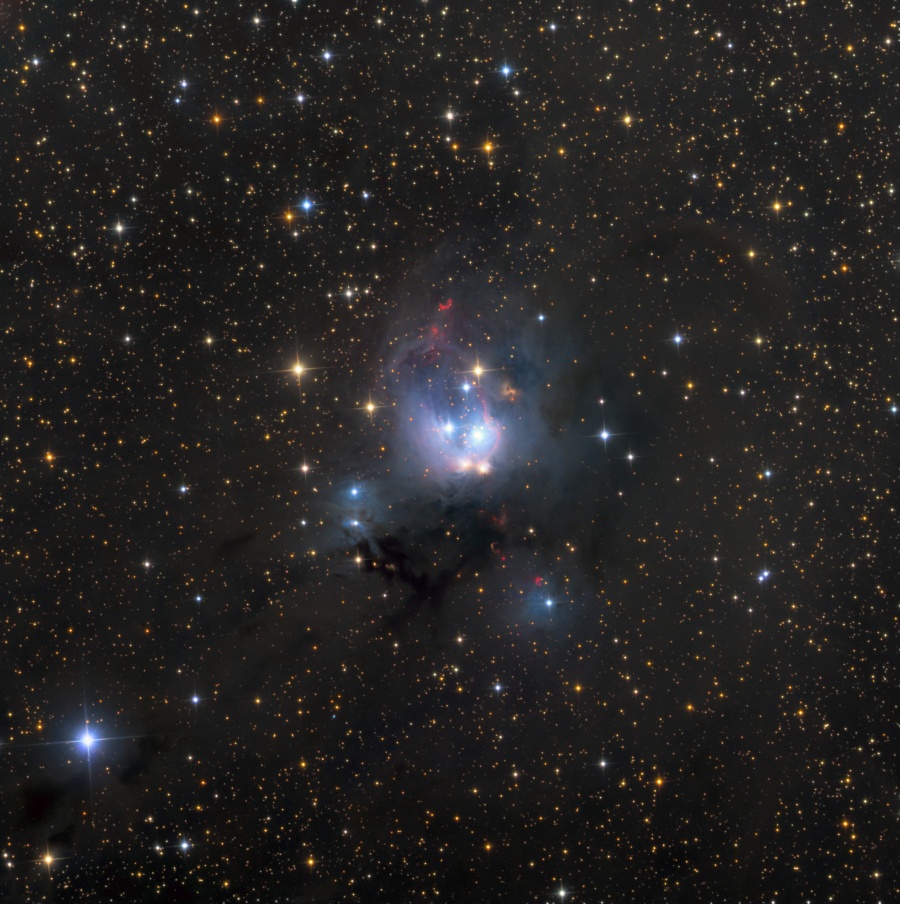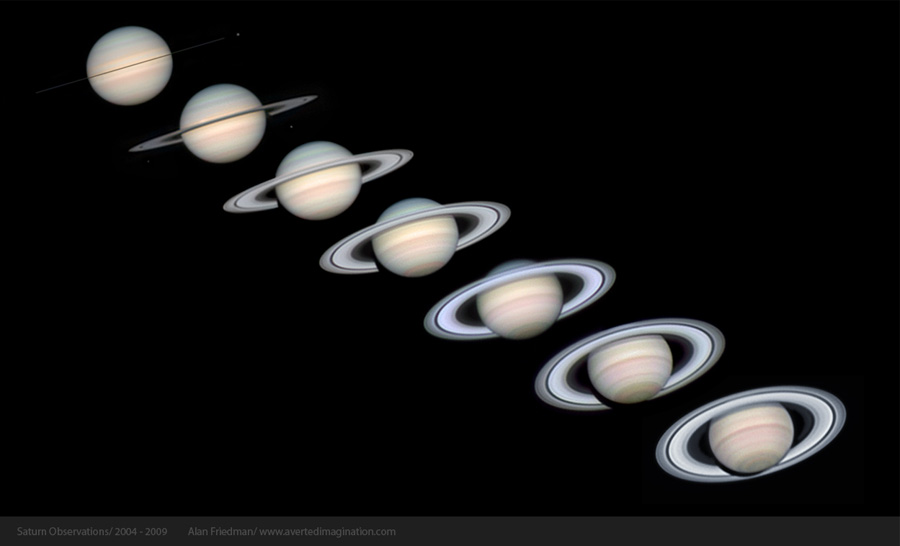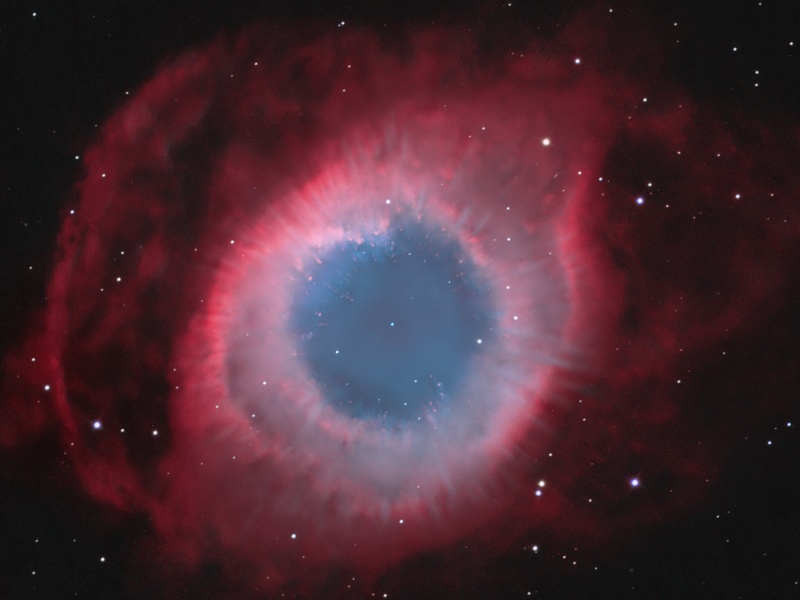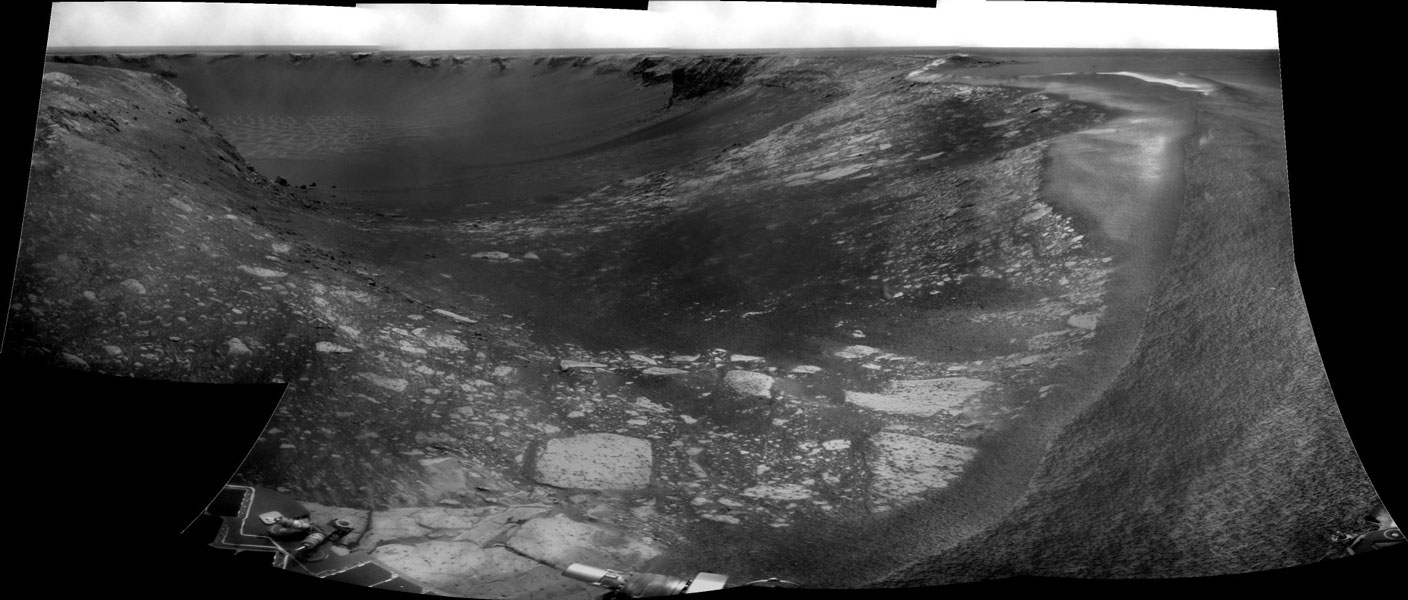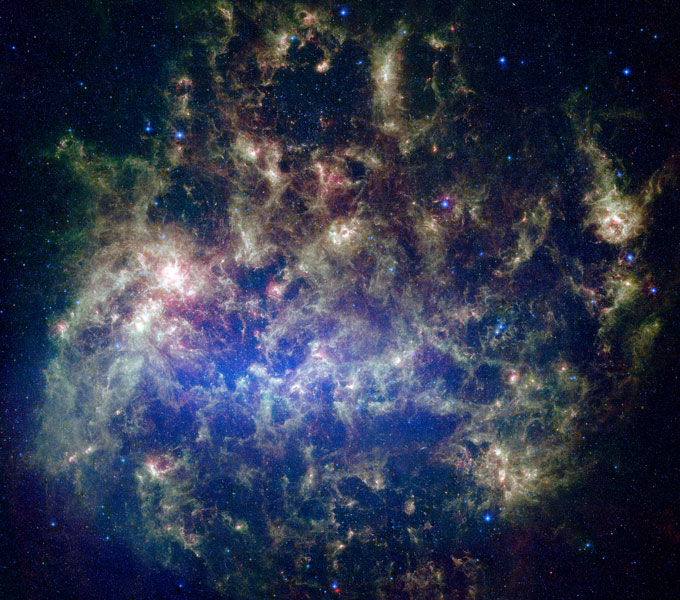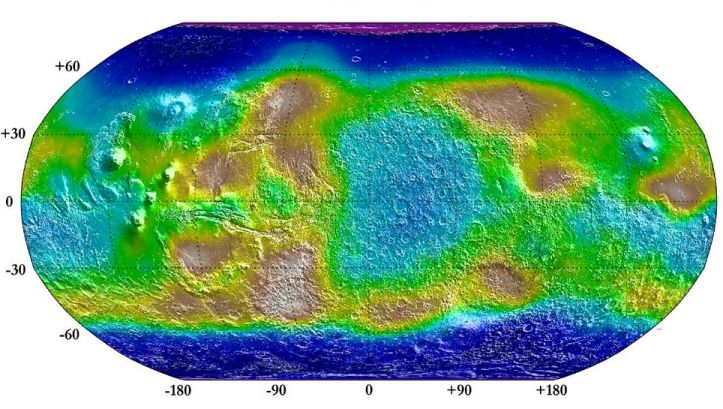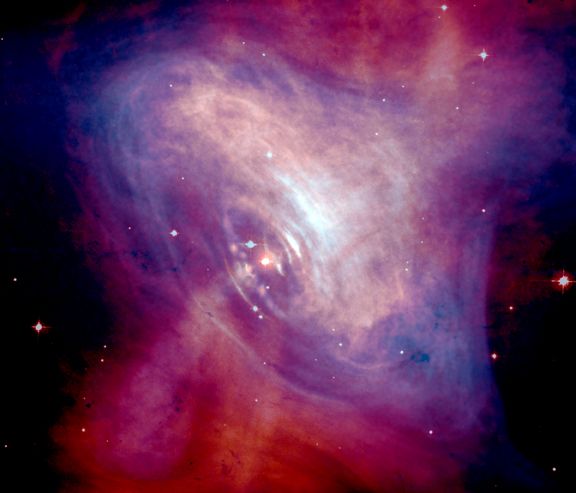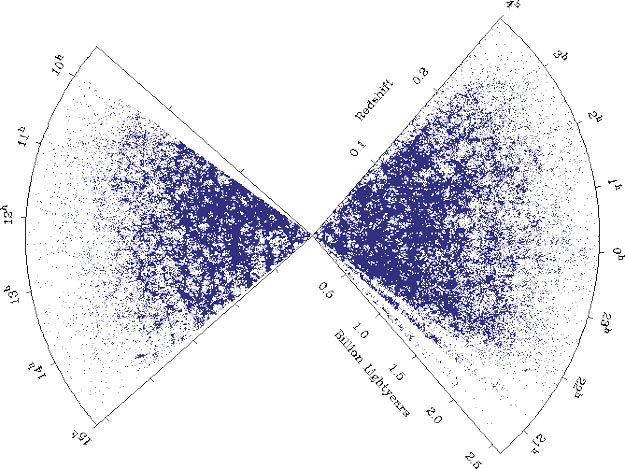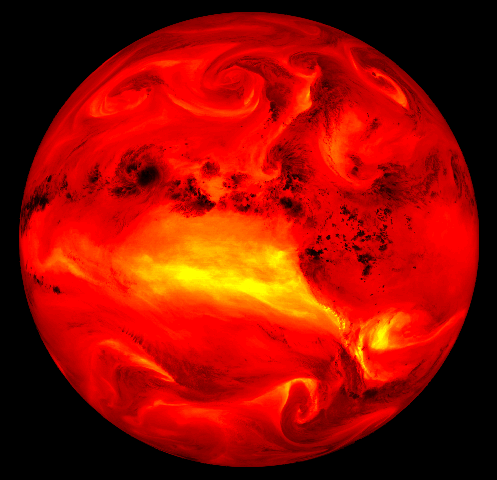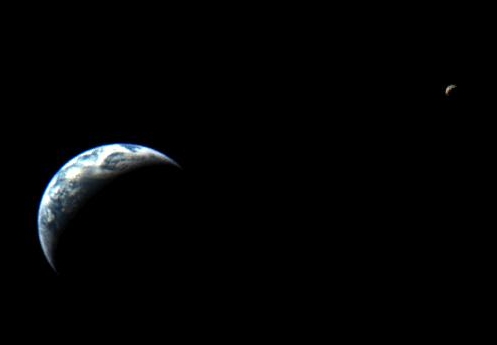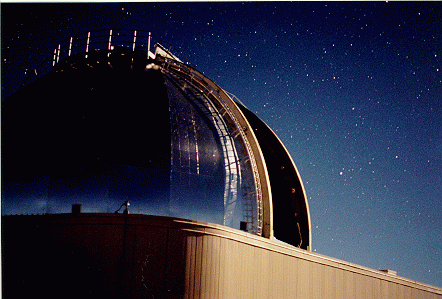| << Previous | Index | Next >> |
2015 After sunset on September 1, an exceptionally intense, reddish airglow flooded this Chilean winter night skyscape. Above a sea of clouds and flanking the celestial Milky Way, the airglow seems to ripple and flow across the northern horizon in atmospheric waves. Originating at an altitude similar to aurorae, the luminous airglow is instead due to chemiluminescence, the production of light through chemical excitation. Commonly captured with a greenish tinge by sensitive digital cameras, this reddish airglow emission is from OH molecules and oxygen atoms at extremely low densities and has often been present in southern hemisphere nights during the last few years. On this night it was visible to the eye, but seen without color. Antares and the central Milky Way lie near the top, with bright star Arcturus at left. Straddling the Milky Way close to the horizon are Vega, Deneb, and Altair, known in northern nights as the stars of the Summer Triangle.
2014 On October 19th, a good place to watch Comet Siding Spring will be from Mars. Then, this inbound visitor (C/2013 A1) to the inner solar system, discovered in January 2013 by Robert McNaught at Australia's Siding Spring Observatory, will pass within 132,000 kilometers of the Red Planet. That's a near miss, equivalent to just over 1/3 the Earth-Moon distance. Great views of the comet for denizens of planet Earth's southern hemisphere are possible now, though. This telescopic snapshot from August 29 captured the comet's whitish coma and arcing dust tail sweeping through southern skies. The fabulous field of view includes, the Small Magellanic Cloud and globular star clusters 47 Tucanae (right) and NGC 362 (upper left). Worried about all those spacecraft in Martian orbit? Streaking dust particles from the comet could pose a danger and controllers plan to position Mars orbiters on the opposite side of the planet during the comet's close flyby.
2013 Will this caterpillar-shaped interstellar cloud one day evolve into a butterfly-shaped nebula? No one is sure. What is sure is that IRAS 20324+4057, on the inside, is contracting to form a new star. On the outside, however, energetic winds are blowing and energetic light is eroding away much of the gas and dust that might have been used to form the star. Therefore, no one is sure what mass the resulting star will have, and, therefore, no one knows the fate of this star. Were the winds and light to whittle the protostar down near the mass of the Sun, the outer atmosphere of this new star may one day expand into a planetary nebula, possibly even one that looks like a butterfly. Alternatively, if the stellar cocoon retains enough mass, a massive star will form that will one day explode in a supernova. The eroding protostellar nebula IRAS 20324+4057 spans about one light year and lies about 4,500 light years away toward the constellation of the Swan (Cygnus). The above image of IRAS 20324+4057 was taken with the Hubble Space Telescope in 2006 but released last week. The battle between gravity and light will likely take over 100,000 years to play out, but clever observations and deductions may yet yield telling clues well before that.
2012 Should you be worried about hurricanes? To find out, it is useful to know where hurricanes have gone in the past. The above Earth map shows the path of every hurricane reported since 1851, Although striking, a growing incompleteness exists in the data the further one looks back in time. The above map graphically indicates that hurricanes -- sometimes called cyclones or typhoons depending on where they form -- usually occur over water, which makes sense since evaporating warm water gives them energy. The map also shows that hurricanes never cross -- or even occur very near -- the Earth's equator, since the Coriolis effect goes to zero there, and hurricanes need the Coriolis force to circulate. The Coriolis force also causes hurricane paths to arc away from the equator. Although incompleteness fogs long term trends and the prevalence of hurricanes remains a topic of research, evidence is accumulating that hurricanes are, on the average, more common and more powerful in the North Atlantic Ocean over the past 20 years.
2011 In the shadow of Saturn, unexpected wonders appear. The robotic Cassini spacecraft now orbiting Saturn drifted in giant planet's shadow for about 12 hours in 2006 and looked back toward the eclipsed Sun. Cassini saw a view unlike any other. First, the night side of Saturn is seen to be partly lit by light reflected from its own majestic ring system. Next, the rings themselves appear dark when silhouetted against Saturn, but quite bright when viewed away from Saturn, slightly scattering sunlight, in this exaggerated color image. Saturn's rings light up so much that new rings were discovered, although they are hard to see in the image. Seen in spectacular detail, however, is Saturn's E ring, the ring created by the newly discovered ice-fountains of the moon Enceladus and the outermost ring visible above. Far in the distance, at the left, just above the bright main rings, is the almost ignorable pale blue dot of Earth.
2010 Young suns still lie within dusty NGC 7129, some 3,000 light-years away toward the royal constellation Cepheus. While these stars are at a relatively tender age, only a few million years old, it is likely that our own Sun formed in a similar stellar nursery some five billion years ago. Most noticeable in the sharp, (zoomable) image are the lovely bluish dust clouds that reflect the youthful starlight, but the smaller, deep red crescent shapes are also markers of energetic, young stellar objects. Known as Herbig-Haro objects, their shape and color is characteristic of glowing hydrogen gas shocked by jets streaming away from newborn stars. Ultimately the natal gas and dust in the region will be dispersed, the stars drifting apart as the loose cluster orbits the center of the Galaxy. At the estimated distance of NGC 7129, this telescopic view spans about 40 light-years.
2009 Today, planet Earth passes through the plane of Saturn's rings. From the perspective of earthbound astronomers, Saturn's rings will be edge-on. The problem is, Saturn itself is now very close to the Sun, low on horizon after sunset, so good telescopic images will be difficult to come by. Still, this composite of Saturn views taken from 2004 - 2009 (lower right to upper left) illustrates the change in ring tilt over the last six years and includes a nearly edge-on ring view, based on images captured earlier this year. While Saturn's south pole is clearly seen in the sequence, particularly at the lower right, it will be hidden in the coming years. Saturn's north pole will be increasingly visible, along with the tilting rings, as the planet emerges this fall in the predawn sky.
2008 At first glance, the Helix Nebula (aka NGC 7293), looks simple and round. But this well-studied example of a planetary nebula, produced near the end of the life of a sun-like star, is now understood to have a surprisingly complex geometry. Its extended loops and comet-shaped features have been explored in Hubble Space Telescope images. Still, a 16-inch diameter telescope and camera with broad and narrow band filters was used to create this sharp view of the Helix. The color composite also reveals the nebula's intriguing details, including light-year long, bluegreen radial stripes or spokes that give it the appearance of a cosmic bicycle wheel. The spoke features seem to indicate that the Helix Nebula is itself an old and evolved planetary nebula. The Helix is a mere seven hundred light years from Earth, in the constellation Aquarius.
2007 What's inside Victoria Crater? Now that the dust has settled from the regional Martian dust storms that immobilized the rolling Martian rovers, the task ahead has become clear. Opportunity arrived at Victoria Crater last month and was poised to enter when the dust storms flared up unexpectedly. The above image was taken last week by the Opportunity rover perched at a possibly traversable slope into the 750-meter impact feature. Victoria Crater is the largest crater that either Martian rover has come across during their explorations. The crater walls might hold clues about the Martian surface before the tremendous impact that created Victoria Crater.
2006 Where does dust collect in galaxies? To help find out, a team of researchers took the most detailed image ever of gas clouds and dust in the neighboring Large Magellanic Cloud (LMC) galaxy. The composite image, shown above, was taken by the Spitzer Space Telescope in infrared light, which highlights the natural glow of the warm materials returned to the interstellar medium by stars. The above mosaic combines 300,000 individual pointings to create a composite 1,000-times sharper than any previous LMC image. Visible are vast clouds of gas and dust, showing in graphic detail that dust prefers regions near young stars (red-tinted bright clouds), scattered unevenly between the stars (green-tinted clouds), and in shells around old stars (small red dots). Also visible are huge caverns cleared away by the energetic outflows of massive former stars. The faint blue (false-color) glow across the bottom is the combined light from the old stars in the central bar of the LMC. The LMC is a satellite galaxy to our own Milky Way Galaxy, spans about 70,000 light years, and lies about 160,000 light years away toward the southern constellation of the Swordfish (Dorado).
2005 Comet Hale-Bopp became much brighter than any surrounding stars. It was seen even over bright city lights. Out away from city lights, however, it put on quite a spectacular show. Here Comet Hale-Bopp was photographed above Val Parola Pass in the Dolomite mountains surrounding Cortina d'Ampezzo, Italy. Comet Hale-Bopp's blue ion tail was created when fast moving particles from the solar wind struck expelled ions from the comet's nucleus. The white dust tail is composed of larger particles of dust and ice expelled by the nucleus that orbit behind the comet. Observations showed that Comet Hale-Bopp's nucleus spins about once every 12 hours.
2004 Looking for water on Mars, researchers using detectors on board the orbiting Mars Odyssey spacecraft have created this false-color global map of energetic neutrons from the otherwise Red Planet. What do neutrons have to do with water? As cosmic rays from interplanetary space penetrate the thin martian atmosphere and reach the surface they interact with elements in the upper layer of soil, scattering neutrons back into space. But if the martian soil contains hydrogen, it seriously absorbs energetic scattered neutrons. Tracking variations in absorption, neutron detectors can map changes in surface hydrogen content from orbit. Hydrogen content is taken as a surrogate measure of frozen water (H20), the most likely form of hydrogen close to the martian surface. Thus, bluer shades in the above map correspond to larger presumed concentrations of near-surface water ice. Water ice at the martian poles came as no surprise, but significant concentrations also seem to be present at lower latitudes. The melting of such near-surface ice could be responsible for the formation of martian gullies.
2003 The Crab Pulsar, a city-sized, magnetized neutron star spinning 30 times a second, lies at the center of this composite image of the inner region of the well-known Crab Nebula. The spectacular picture combines optical data (red) from the Hubble Space Telescope and x-ray images (blue) from the Chandra Observatory, also used in the popular Crab Pulsar movies. Like a cosmic dynamo the pulsar powers the x-ray and optical emission from the nebula, accelerating charged particles and producing the eerie, glowing x-ray jets. Ring-like structures are x-ray emitting regions where the high energy particles slam into the nebular material. The innermost ring is about a light-year across. With more mass than the Sun and the density of an atomic nucleus, the spinning pulsar is the collapsed core of a massive star that exploded, while the nebula is the expanding remnant of the star's outer layers. The supernova explosion was witnessed in the year 1054.
2002 The Cat's Eye Nebula (NGC 6543) is one of the best known planetary nebulae in the sky. Its haunting symmetries are seen in the very central region of this stunning false-color picture, processed to reveal the enormous but extremely faint halo of gaseous material, over three light-years across, which surrounds the brighter, familiar planetary nebula. Made with data from the Nordic Optical Telescope in the Canary Islands, the composite picture shows emission from nitrogen atoms as red and oxygen atoms as green and blue shades. Planetary nebulae have long been appreciated as a final phase in the life of a sun-like star. Only much more recently however, have some planetaries been found to have halos like this one, likely formed of material shrugged off during earlier active episodes in the star's evolution. While the planetary nebula phase is thought to last for around 10,000 years, astronomers estimate the age of the outer filamentary portions of this halo to be 50,000 to 90,000 years.
2001 How are galaxies distributed in the universe? This question is of more than aesthetic interest because the answer likely holds clues to composition of the universe itself. The above map shows the distribution of nearly 200,000 galaxies and is the latest answer obtained by one of the most complex astronomical instruments yet created: the Two-Degree Field (2dF) system. The 2dF system measures galaxy redshifts, allowing astronomers to estimate distances to some of the millions of galaxies visible, and hence to make a three-dimensional map of the local universe. Although the distribution of galaxies appears nearly uniform on the largest scale, waves of galaxies are discernable extending up to 100 million light-years. Detailed analyses of the incoming data indicate that to create such a network of waves, normal baryonic matter must make up only 15 percent of all matter, while all matter must make up only about 30 percent of that needed to make the universe geometrically flat. Is the remaining 70 percent dark energy?
2000 Last month, skywatchers were treated to an unexpected coincidence: bright aurorae occurred during the Perseid Meteor Shower. The above picture was taken August 12 and captures eerie looking aurorae and a faint Perseid meteor above Cross Lake in Wisconsin, USA. The near future holds promise for both more aurorae and a better meteor shower. Aurorae are becoming increasingly common as their trigger -- our Sun -- nears its period of highest activity during its eleven-year magnetic cycle. Coming up in mid-November is the quirky Leonids Meteor Shower. Although one of the better studied meteor showers, the Leonids have surprised astronomers many times and so many an optimistic skywatcher promises to be outside this year hoping for a memorable show.
1999 What alien planet's bizarre landscape lurks below these fiery-looking clouds? It's only Planet Earth, of course ... as seen on the Water Vapor Channel. Hourly, images like this one (an infrared image shown in false color) are brought to you by the orbiting Geostationary Operational Environmental Satellites' (GOES) multi-channel imagers. These instruments can produce images at the infrared wavelength of 6.7 microns or about 10 times the wavelength of visible light, recording radiation emitted by water vapor in the upper troposphere. Bright regions correspond to high concentrations of water vapor while dark spots are relatively dry areas. Atmospheric water vapor is invisible to the eye and produced by evaporation from the oceans. Convected upward in the tropical zones it affects the climate by contributing substantially to the greenhouse effect.
1998 Japan launched its first mission to orbit Mars, Nozomi (Hope), on July 3rd from the Kagoshima Space Center on the island of Kyushu. Nozomi's goal is to explore the Martian atmosphere and magnetic field as well as regions of the planet's surface and moons. Formerly known as Planet B, the spacecraft will use highly elliptical orbits with successive Earth/Moon flybys to help slingshot itself along its ultimate trajectory toward Mars, arriving at the red planet in October 1999. This stunning picture of the crescent Earth-Moon system was taken by Nozomi's onboard camera on July 18 from a point in space about 100,000 miles from the Earth and 320,000 miles from the Moon. Vibrant and bright, the reflective clouds and oceans of Earth contrast strongly with the dark, somber tones of the lunar surface.
1997 The surface of the Sun is shifting. By watching sunspots, it has long been known that our Sun rotates. It was also known that the center of the Sun rotates faster than the poles. Now, recent measurements by the Solar Oscillations Investigations group of the SOHO Observatory have found that the surface of the sun moves in other ways, too. Hot, electrically charged gas flows along and beneath the Sun's surface as depicted in the above computer generated diagram. The speed of these solar rivers is false-color coded with red hydrogen moving faster than blue. Over the course of a year plasma moves from the equator to the poles, while internal eddies circulate gas from deep inside the Sun. One surprise is the similarity to the motion of air in the Earth's atmosphere - indicating that scientists might learn more about Earth's global weather by studying the Sun.
1996 Above, NASA's Infrared Telescope Facility (IRTF) poses in front of a starry background. Located on top of Hawaii's towering volcano Mauna Kea, the IRTF is the premier telescope for observing in near infrared light. This 3-meter telescope was established in 1979 and spends about half its time observing Solar System objects. In 1994, for example, the IRTF recorded pieces of the famous comet Shoemaker-Levy 9 plunge into Jupiter. Last year, the IRTF recorded an outburst of a volcano on Jupiter's moon Io. IRTF's observational successes outside our Solar System include understanding the infrared emission of dust and Pre-Main Sequence stars and even the identification of faint galaxies.
1995 Ganymede probably undergoes frequent ground shaking events not unlike terrestrial earthquakes. Ganymede, the largest moon of Jupiter and the Solar System, has a thick outer coating of water ice. Passing Voyager spacecraft found a large number of cracks and grooves in the ice so it is thought that Ganymede, like the Earth, has large shifting surface masses called tectonic plates. Ganymede was discovered by Galileo and Marius in 1610, and is larger than the planets Mercury and Pluto. The NASA spacecraft Galileo is scheduled to arrive at Jupiter is December of 1995.
| << Previous | Index | Next >> |
